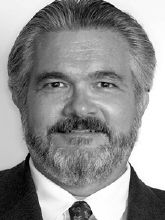Facial beauty and the attractiveness of the smile - or "facial harmony", to use an expression commonly seen in the orthodontic literature - have fascinated orthodontists since the beginning of the profession. In an excellent 2006 overview of the subject, Naini and colleagues examined contemporary concepts of facial beauty and esthetics, pointing out that "the study of the face and the ability to alter its form have fascinated mankind for thousands of years. The clinical ability to alter dentofacial form, whether through orthodontics, facial growth modification, or surgery, requires an understanding of facial beauty, including the evaluation of facial esthetics, proportions, and symmetry."1
This "clinical ability to alter dentofacial form" is probably the main reason patients seek our help. Although Angle justifiably held the opinion that facial beauty is really just a side benefit of proper occlusion, if I were to judge from my own practice, the ratio of patients who seek care for the purpose of correcting their occlusions to those who seek care for the purpose of making their smiles more attractive is about one in 100. Most of my colleagues seem to feel the same way. The establishment of proper occlusion and masticatory function is of paramount importance to us as orthodontists, but the improvement of facial appearance is the mainstay of our practices.
Similar articles from the archive:
With that in mind, an objective, quantifiable assessment of facial esthetics - in particular, a means of determining a harmonious facial profile - has long been a goal of clinical researchers. The names associated with the quest for measurable standards of facial harmony and ideal proportions of the soft-tissue profile read like a who's who in the history of orthodontics. In 1953, Steiner proposed the S-line - a line from soft-tissue pogonion to the inflection point between the tip of the nose and subnasale - as a cephalometric reference plane for the profile.2 This proved to be relatively useful, and it remains one of my primary guidelines. Downs's landmark 1956 paper on the dentofacial profile introduced what others have referred to as the "Wigglegram", a viable assessment of the profile based on hard-tissue measurements.3 Since then, Ricketts, Merrifield, Holdaway, Bass, Sarver, Bergman, Arnett and Gunson, and many others have offered numerous cephalometric tools to assist us in appraising ideal profile proportions.
Simplicity and ease of application are always appreciated in any diagnostic technique. While Steiner's S-line is simple to identify and use, subsequent published analyses seem to be increasingly complex. Indeed, some of the more recent schemata for analyzing the profile, especially those used in three-dimensional imaging, have been prohibitively difficult to apply.
In the current issue of JCO, Drs. Michael Webb, Frank Cordray, and Emile Roussow present a new, relatively simple assessment of the ideal soft-tissue profile, based on only two lines and the position of the upper incisor. Having initially explored the applicability of these reference planes through statistical analysis of a sizable sample of orthodontic patients, the authors follow up with three case reports to provide clinical verification of their findings. I, for one, welcome this return to simplicity, and I've already begun implementing their analysis.
Also in this issue, Dr. Neal Kravitz reviews a new book by Drs. J. William Robbins and Jeffrey S. Rouse, Global Diagnosis: A New Vision of Dental Diagnosis and Treatment Planning. According to Dr. Kravitz, the authors consider facial esthetics in the context of interdisciplinary treatment, again using the "incisal-edge position of the maxillary anterior teeth as the starting point in diagnosis". While all of us have our own approaches to diagnosis and treatment planning - and most of us are relatively stuck in our ways - the new analysis by Webb and colleagues and the book by Robbins and Rouse appear to be welcome additions to the scientific literature on profile assessment.
RGK
REFERENCES
- 1. Naini, F.B.; Moss, J.P.; and Gill, D.S.: The enigma of facial beauty: Esthetics, proportions, deformity, and controversy, Am. J. Orthod. 130:277-282, 2006.
- 2. Steiner, C.C.: Cephalometrics for you and me, Am. J. Orthod. 39:729-755, 1953.
- 3. Downs, W.B.: Analysis of the dentofacial profile, Angle Orthod. 26:191-211, 1956.


